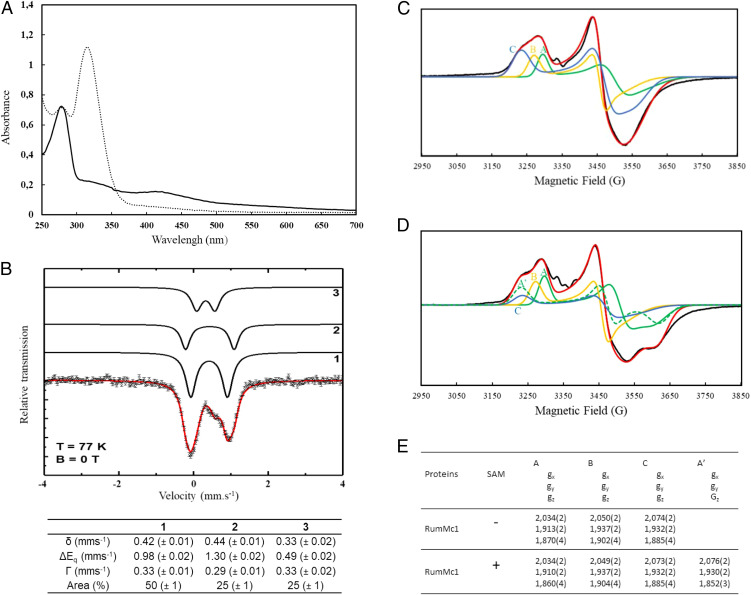Fig. 2.
Spectroscopic characterizations of holo-RumMc1. (A) UV-vis spectrum of holo-RumMc1 in the absence (solid trace) or the presence of dithionite (dashed trace). (B) Mössbauer spectrum of holo-RumMc1 taken at T = 77 K with the simulation (red solid line) representing the sum of the subcomponents 1, 2, and 3 (black lines). Components 1 and 2 are simulated in a ratio of 2:1 and represent two diamagnetic [4Fe4S]2+ clusters. One [4Fe-4S]2+ cluster is supposed to bind SAM. Component 3 was assigned to Fe3+ ions present in a [3Fe-4S]1+ cluster in a S = 1/2 state. The respective Mössbauer parameters obtained from the simulation of the spectra at 77 K are summarized below the spectrum. (C) X-band continuous wave (CW) EPR spectra of dithionite-reduced holo-RumMc1. The black line represents the experimental spectrum, while the red trace is the simulated spectrum by using three components, A, B and C. (D) X-band CW EPR spectra of dithionite-reduced holo-RumMc1 in the presence of SAM. The black trace represents the experimental spectrum, while the red trace is the simulated spectrum by using four components, A, B, C, and A′. (E) g values of components A, B, C, and A′ used to simulate the experimental EPR spectra.

